39 prokaryotic cells with labels
Prokaryotic and Eukaryotic Cells - CK-12 Foundation Prokaryotic cells are cells without a nucleus. The DNA in prokaryotic cells is in the cytoplasm rather than enclosed within a nuclear membrane. Prokaryotic cells are found in single-celled organisms, such as bacteria. Organisms with prokaryotic cells are called prokaryotes. They were the first type of organisms to evolve and are still the most ... Eukaryotic Cells | Biology I - Lumen Learning Like prokaryotes, eukaryotic cells have a plasma membrane (Figure 2) made up of a phospholipid bilayer with embedded proteins that separates the internal contents of the cell from its surrounding environment. A phospholipid is a lipid molecule composed of two fatty acid chains and a phosphate group.
Prokaryotes - Prokaryotic and eukaryotic cells - BBC Bitesize Prokaryotes Bacteria are amongst the simplest of organisms - they are made of single cells. Their cell structure is simpler than the cells of eukaryotes and cells are smaller, most are...

Prokaryotic cells with labels
A Labeled Diagram of the Animal Cell and its Organelles A Labeled Diagram of the Animal Cell and its Organelles. There are two types of cells - Prokaryotic and Eucaryotic. Eukaryotic cells are larger, more complex, and have evolved more recently than prokaryotes. Where, prokaryotes are just bacteria and archaea, eukaryotes are literally everything else. From amoebae to earthworms to mushrooms, grass ... Label the prokaryotic cell Quiz - PurposeGames.com Label the prokaryotic cell Quiz Science » Image Quiz Label the prokaryotic cell by blueseas 6,336 plays 8 questions ~20 sec English More 0 too few (you: not rated) Tries 8 [?] Last Played February 22, 2022 - 12:00 am There is a printable worksheet available for download here so you can take the quiz with pen and paper. Remaining 0 Correct 0 Wrong 0 Prokaryote - Wikipedia Distinctive types of prokaryotes include extremophiles and methanogens; these are common in some extreme environments. [1] Contents 1 History 2 Structure 3 Morphology 4 Reproduction 5 DNA transfer 6 Sociality 7 Environment 8 Classification 8.1 Phylogenetic tree 9 Evolution 10 Relationship to eukaryotes 11 Prokaryotes may be split into two groups
Prokaryotic cells with labels. 2.3: Prokaryotic and Eukaryotic Cells - Biology LibreTexts Prokaryotic cells are cells without a nucleus. The DNA in prokaryotic cells is in the cytoplasm rather than enclosed within a nuclear membrane. Prokaryotic cells are found in single-celled organisms, such as bacteria, like the one shown in Figure below. Organisms with prokaryotic cells are ca lled prokaryotes. Stock Images, Photos, Vectors, Video, and Music | Shutterstock Stock Images, Photos, Vectors, Video, and Music | Shutterstock Label a prokaryote worksheet Label a prokaryote prokaryote label ID: 2505341 Language: English School subject: Biology Grade/level: 9-12 Age: 14-18 Main content: Cells Other contents: label Add to my workbooks (10) Download file pdf Embed in my website or blog Add to Google Classroom Add to Microsoft Teams Share through Whatsapp Link to this worksheet: Copy cohenbio Finish!! Eukaryotic cell diagram labelling game - ESL Games Plus All of these organisms have eukaryotic cells, which mean they contain membrane-bound organelles that their prokaryotic rivals sadly lack. Organelles and everything else inside the cell swim in a gelatin-like fluid known as cytoplasm. The outside of the cell is protected by a plasma membrane.
Prokaryotic Cells- Definition, Structure, Characteristics, and ... - BYJUS The prokaryotic cells have four main components: Plasma Membrane- It is an outer protective covering of phospholipid molecules which separates the cell from the surrounding environment. Cytoplasm- It is a jelly-like substance present inside the cell. All the cell organelles are suspended in it. DNA- It is the genetic material of the cell. A Well-labelled Diagram Of Animal Cell With Explanation - BYJUS Animal cells are eukaryotic cells that contain a membrane-bound nucleus. They are different from plant cells in that they do contain cell walls and chloroplast. The animal cell diagram is widely asked in Class 10 and 12 examinations and is beneficial to understand the structure and functions of an animal. A brief explanation of the different ... IB Biology Notes - 2.2 Prokaryotic cells - IB Guides Prokaryotic cells 2.2.1 Draw and label a diagram of the ultrastructure of Escherichia coli (E. coli) as an example of a prokaryote. 2.2.2 Annotate the diagram from 2.2.1 with the functions of each named structure. Cell wall: Protects the cell from the outside environment and maintains the shape of the cell. Prokaryotic Cells: Structure, Function, and Definition - ThoughtCo Prokaryotic cells lack organelles found in eukaryoitic cells such as mitochondria, endoplasmic reticuli, and Golgi complexes. According to the Endosymbiotic Theory, eukaryotic organelles are thought to have evolved from prokaryotic cells living in endosymbiotic relationships with one another. Like plant cells, bacteria have a cell wall.
Bacteria (Prokaryote) Cell Coloring - The Biology Corner Color the cell wall purple. 2. On the inside of the cell wall is the cell membrane . Its job is to regulate what comes in and out of the cell. Color the cell membrane pink. 3. The surface of some bacteria cells is covered in pilus, which help the cell stick to surfaces. Color the pilus light green. 4. 5,082 Eukaryotic Cell Images, Stock Photos & Vectors - Shutterstock Find Eukaryotic Cell stock images in HD and millions of other royalty-free stock photos, illustrations and vectors in the Shutterstock collection. Thousands of new, high-quality pictures added every day. Eukaryotic Cell Labeled Diagram | Quizlet Peroxisome Carries out many biochemical functions depending on the cell type and the organism; break down fats and amino acids into smaller molecules that can be used for energy production by mitochondria Ribosomes Carry out protein synthesis Nucleous Contains most of the DNA that controls the cell. Rough endoplasmic reticulum Eukaryotes and prokaryotes - Cell structure - AQA - BBC Bitesize Eukaryotic cell Prokaryotic cell; Size: Most are 5 μm - 100 μm: Most are 0.2 μm - 2.0 μm: Outer layers of cell: Cell membrane - surrounded by cell wall in plants and fungi
4.5: Prokaryotic Cells - Characteristics of Prokaryotic Cells Prokaryotes lack an organized nucleus and other membrane-bound organelles. Prokaryotic DNA is found in a central part of the cell called the nucleoid. The cell wall of a prokaryote acts as an extra layer of protection, helps maintain cell shape, and prevents dehydration. Prokaryotic cell size ranges from 0.1 to 5.0 μm in diameter.
Prokaryotic cell to label - Labelled diagram - Wordwall Prokaryotic cell to label - Labelled diagram Home Features Contact Price Plans Log In Sign Up Language nucleoid region, pili, ribosomes, flagellum, plasmid, cytoplasm, plasma membrane, cell wall, capsule. Prokaryotic cell to label Share by Susanmgillen KS5 Biology Like Edit Content More Leaderboard Switch template Interactives
Eukaryotic Cell - The Definitive Guide | Biology Dictionary Protozoa are eukaryotic organisms that consist of a single cell. They can move around, eat other small organisms, and digest food within vacuoles. Some protozoa have many cilia, which are small, moveable hairs that allow them to swim around. Others use large flagella - structures that look something like a large tail - to swim through the water.
Prokaryotic Cell: Definition, Characteristics, Diagram & Structure Prokaryotic cell refers to the cell which is unicellular, i.e. made of a single cell. Prokaryotic means "pro" = primitive and "karyos" = nucleus, i.e. prokaryotic cell refers to the cell which has a primitive nucleus. Bacteria and Archaea come under prokaryotes. Characteristics of Prokaryotic Cell
Prokaryotic cells (article) | Khan Academy Only the single-celled organisms of the domains Bacteria and Archaea are classified as prokaryotes— pro means before and kary means nucleus. Animals, plants, fungi, and protists are all eukaryotes— eu means true—and are made up of eukaryotic cells. Often, though—as in the case of we humans—there are some prokaryotic friends hanging around.
Prokaryotic Cell Labeling Diagram | Quizlet A non-membrane-bounded region in a prokaryotic cell where the DNA is concentrated. cytoplasm A jellylike fluid inside the cell in which the organelles are suspended capsule Covers the cell wall in prokaryotes. cytoplasmic membrane a semipermeable barrier that separates the cell interior (cytoplasm) from the environment cell wall
Label the Parts of a Prokaryotic Cell — Printable Worksheet Label the Parts of a Prokaryotic Cell — Printable Worksheet Download and print this quiz as a worksheet. You can move the markers directly in the worksheet. This is a printable worksheet made from a PurposeGames Quiz. To play the game online, visit Label the Parts of a Prokaryotic Cell Download Printable Worksheet Please note!
Prokaryotic Cell - Definition, Examples & Structure - Biology Dictionary A prokaryotic cell is a type of cell that does not have a true nucleus or membrane-bound organelles. Organisms within the domains Bacteria and Archaea are based on the prokaryotic cell, while all other forms of life are eukaryotic. However, organisms with prokaryotic cells are very abundant and make up much of Earth's biomass. Overview
Prokaryotic Cells - Visible Body Prokaryotic cells comprise bacteria and archaea. Their genetic material isn't stored within a membrane-bound nucleus. Instead, it is stored in a nucleoid that floats in the cell's cytoplasm. Prokaryotic cells are normally smaller than eukaryotic cells, with a typical size range of 0.1 to 5 μm in diameter.
Prokaryotic Cell Parts, Functions & Diagram - Science Prof Online Prokaryotic cells are much simpler than the more evolutionarily advanced eukaryotic cell . Whereas eukaryotic cells have many different functional compartments, divided by membranes, prokaryotes only have one membrane (the plasma membrane) enclosing all of the cell's internal contents.
How to draw a prokaryotic cell | prokaryotic organism | Bacterial cell ... Hello friends!!!!In this video, I will be showing you that how to draw "A prokaryotic cell" very easily.Please like, share and subscribe!!! ️ ️ ️ And do tell...
Prokaryote - Wikipedia Distinctive types of prokaryotes include extremophiles and methanogens; these are common in some extreme environments. [1] Contents 1 History 2 Structure 3 Morphology 4 Reproduction 5 DNA transfer 6 Sociality 7 Environment 8 Classification 8.1 Phylogenetic tree 9 Evolution 10 Relationship to eukaryotes 11 Prokaryotes may be split into two groups
Label the prokaryotic cell Quiz - PurposeGames.com Label the prokaryotic cell Quiz Science » Image Quiz Label the prokaryotic cell by blueseas 6,336 plays 8 questions ~20 sec English More 0 too few (you: not rated) Tries 8 [?] Last Played February 22, 2022 - 12:00 am There is a printable worksheet available for download here so you can take the quiz with pen and paper. Remaining 0 Correct 0 Wrong 0
A Labeled Diagram of the Animal Cell and its Organelles A Labeled Diagram of the Animal Cell and its Organelles. There are two types of cells - Prokaryotic and Eucaryotic. Eukaryotic cells are larger, more complex, and have evolved more recently than prokaryotes. Where, prokaryotes are just bacteria and archaea, eukaryotes are literally everything else. From amoebae to earthworms to mushrooms, grass ...


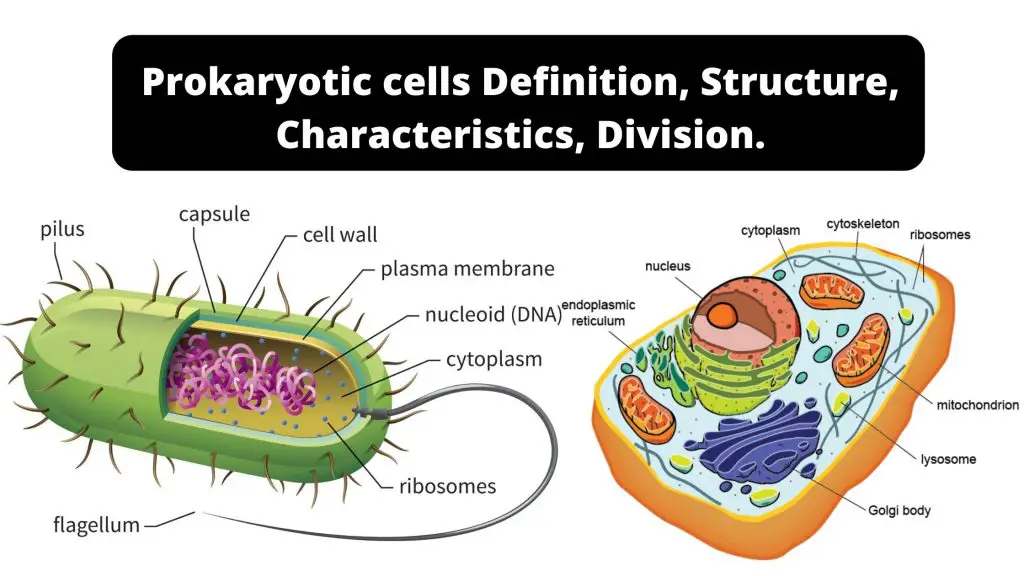
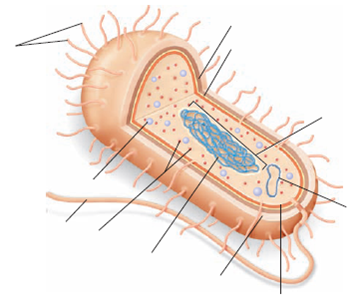


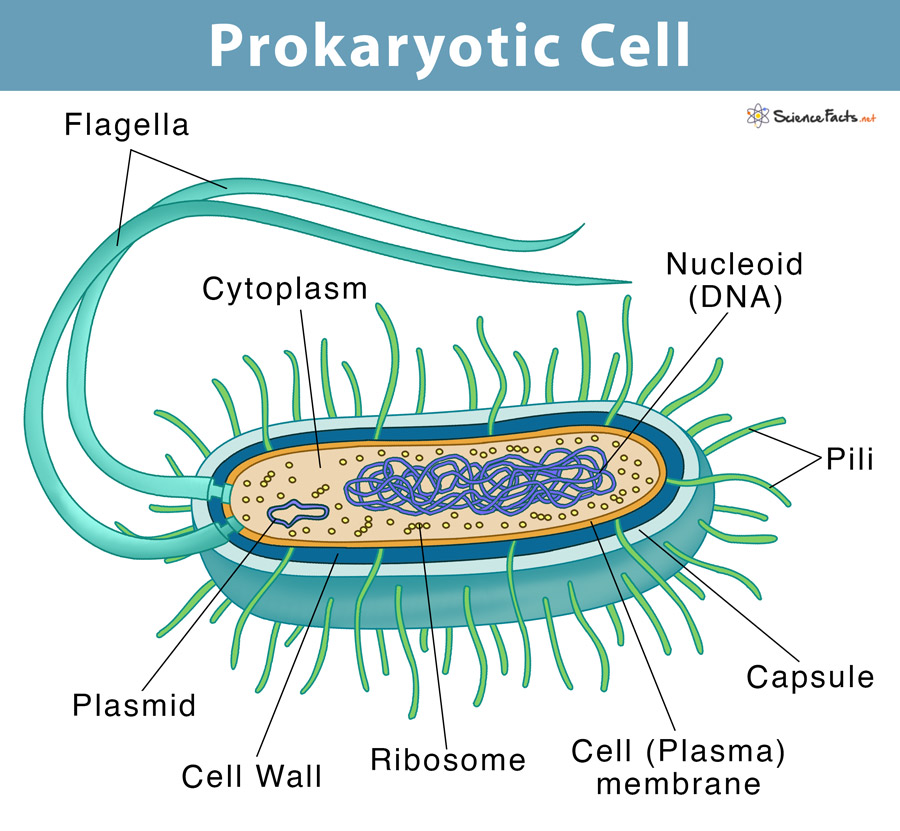
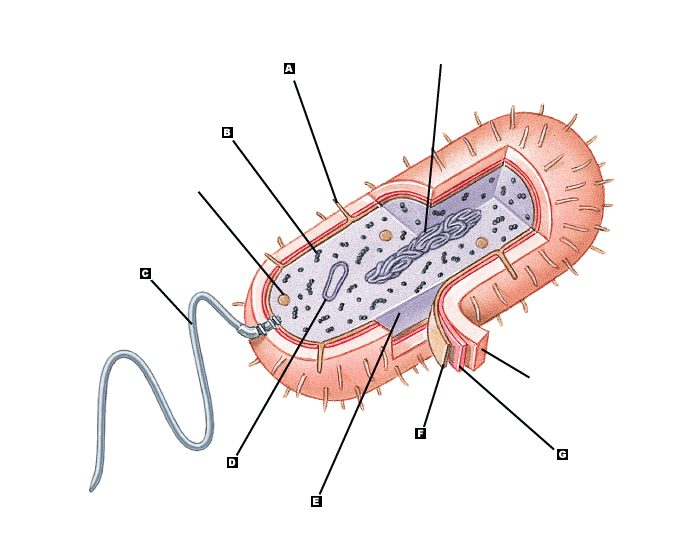
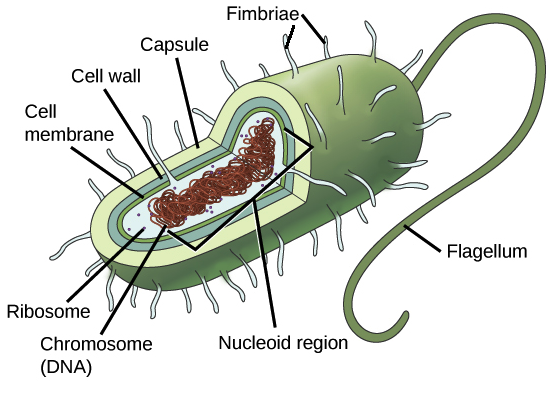
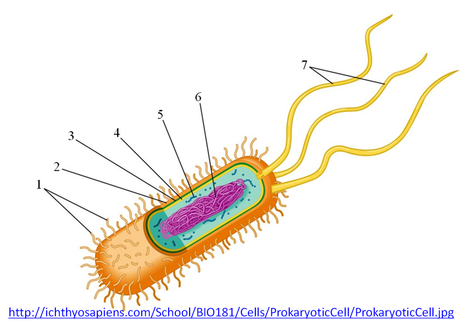


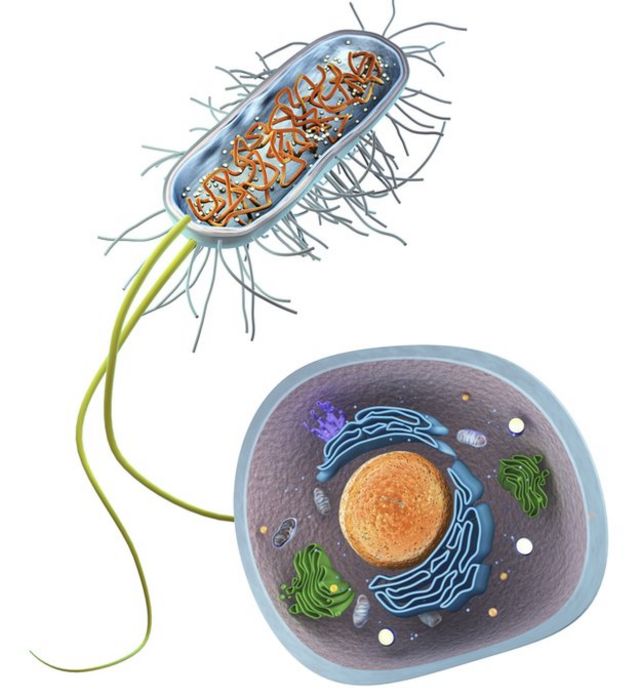
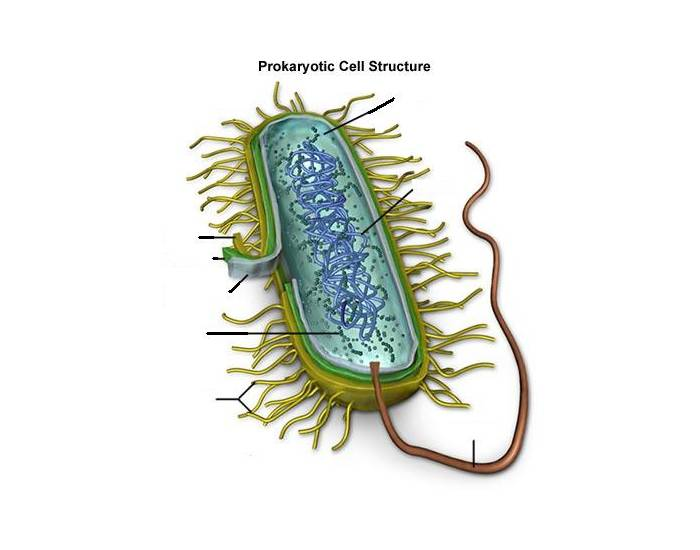

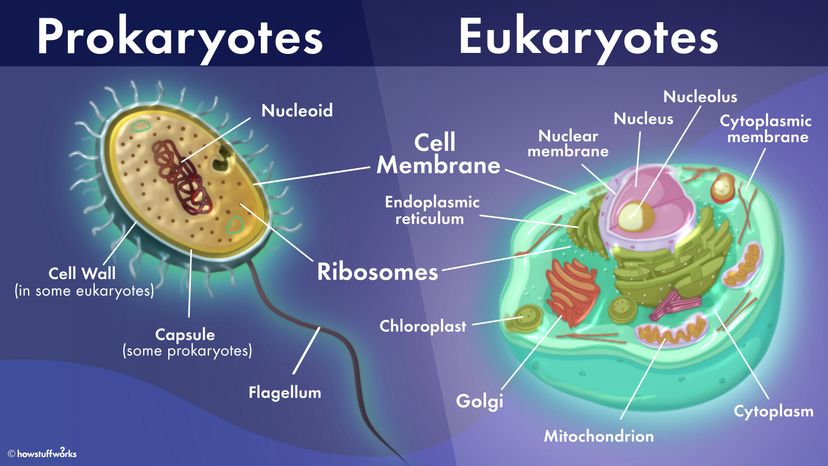
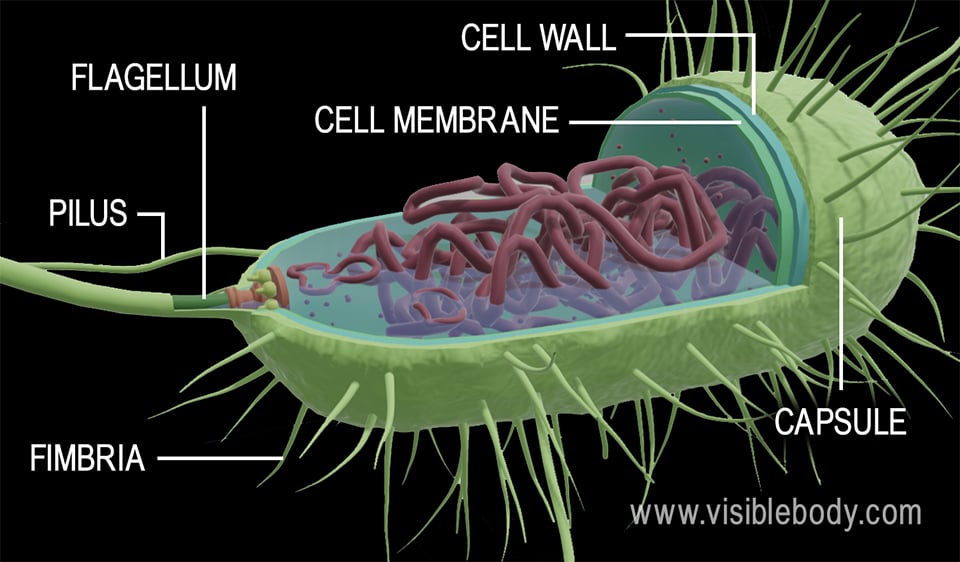
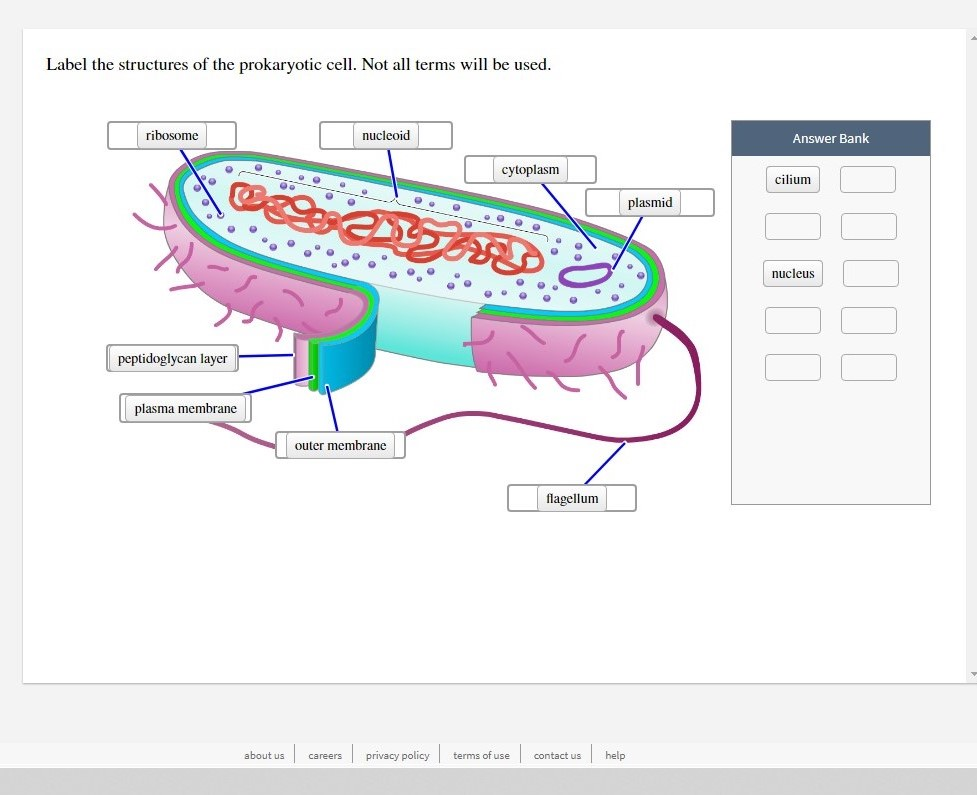




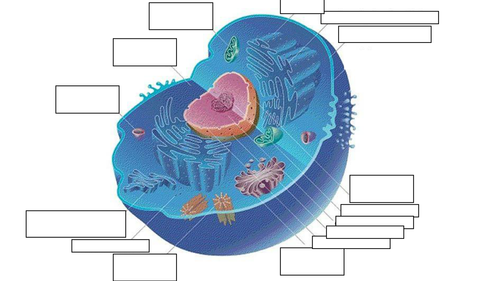
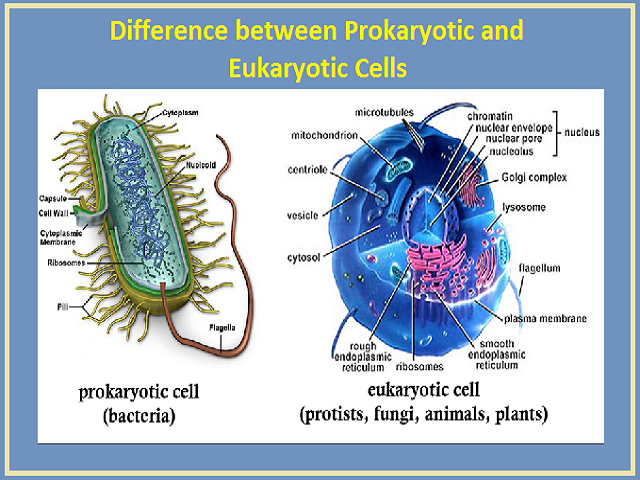


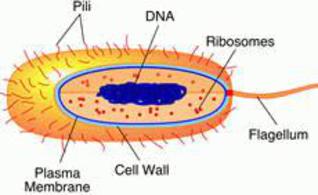

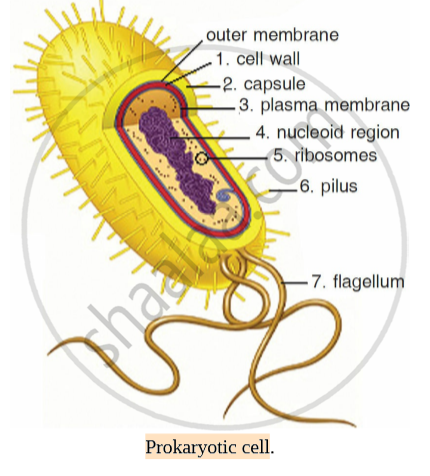
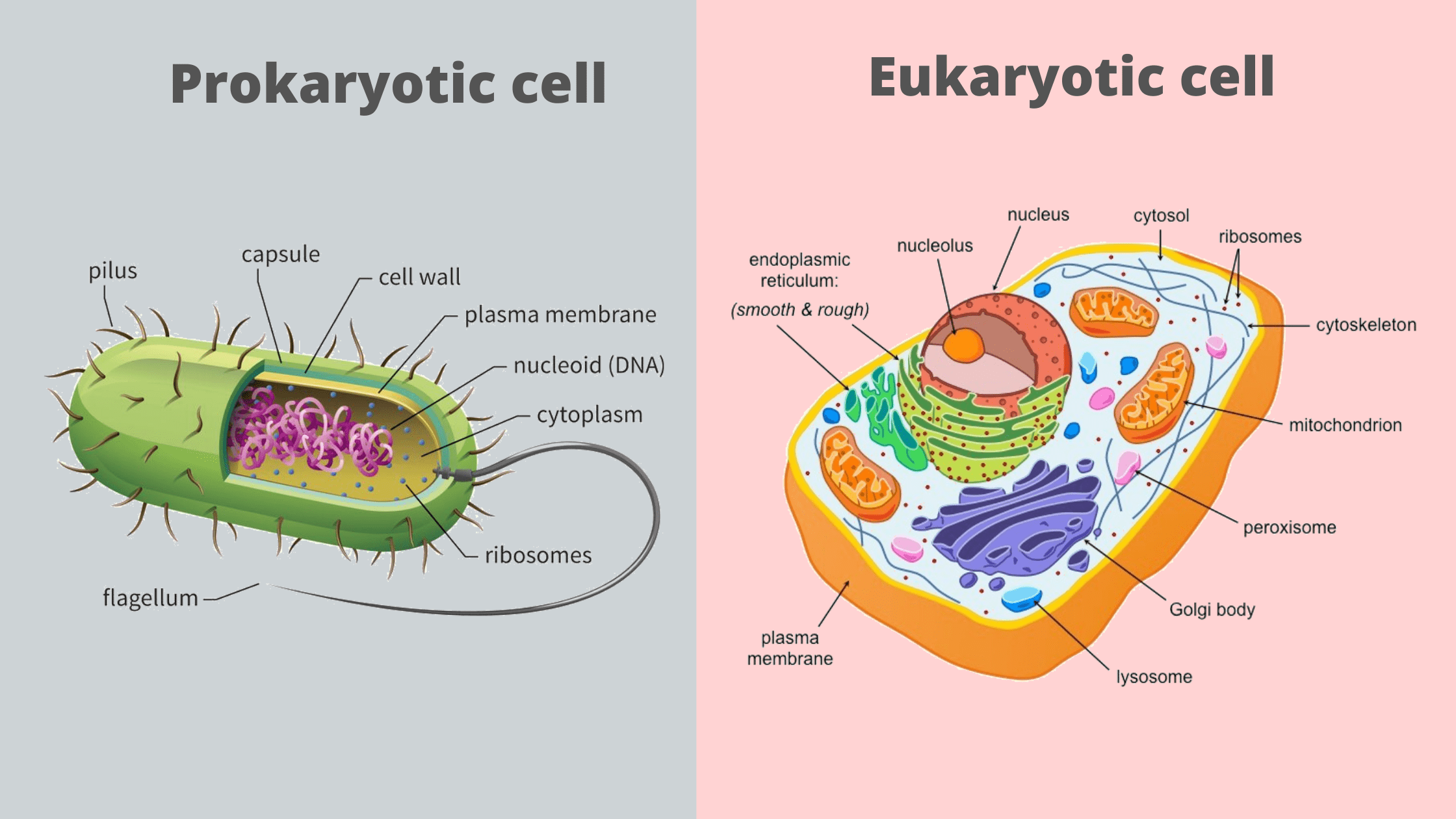

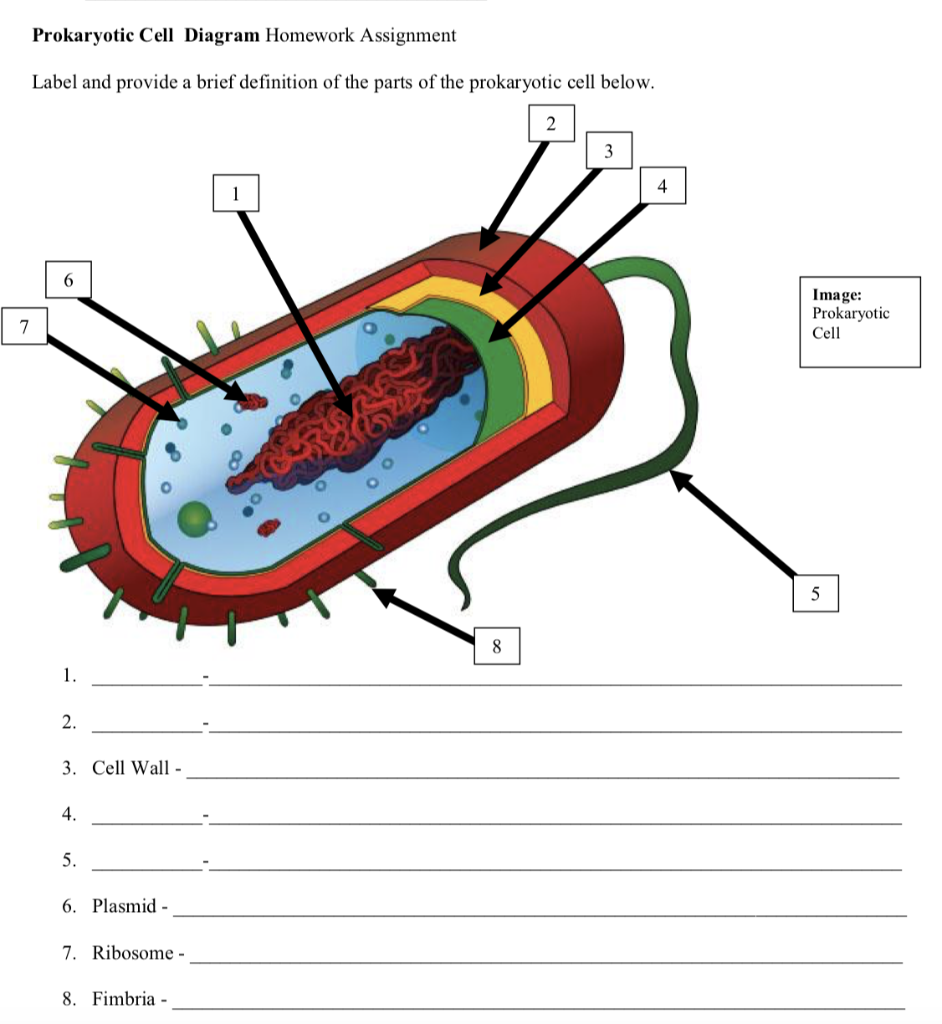
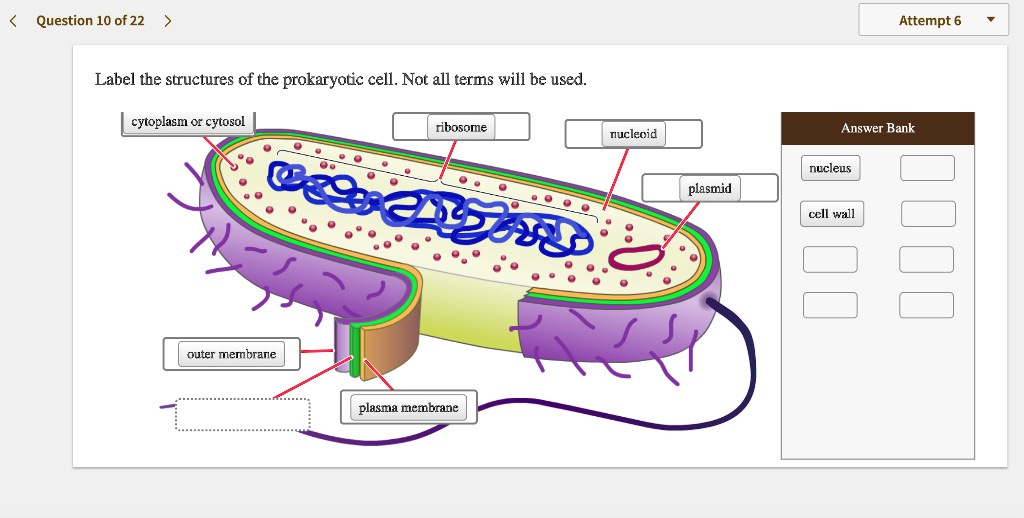
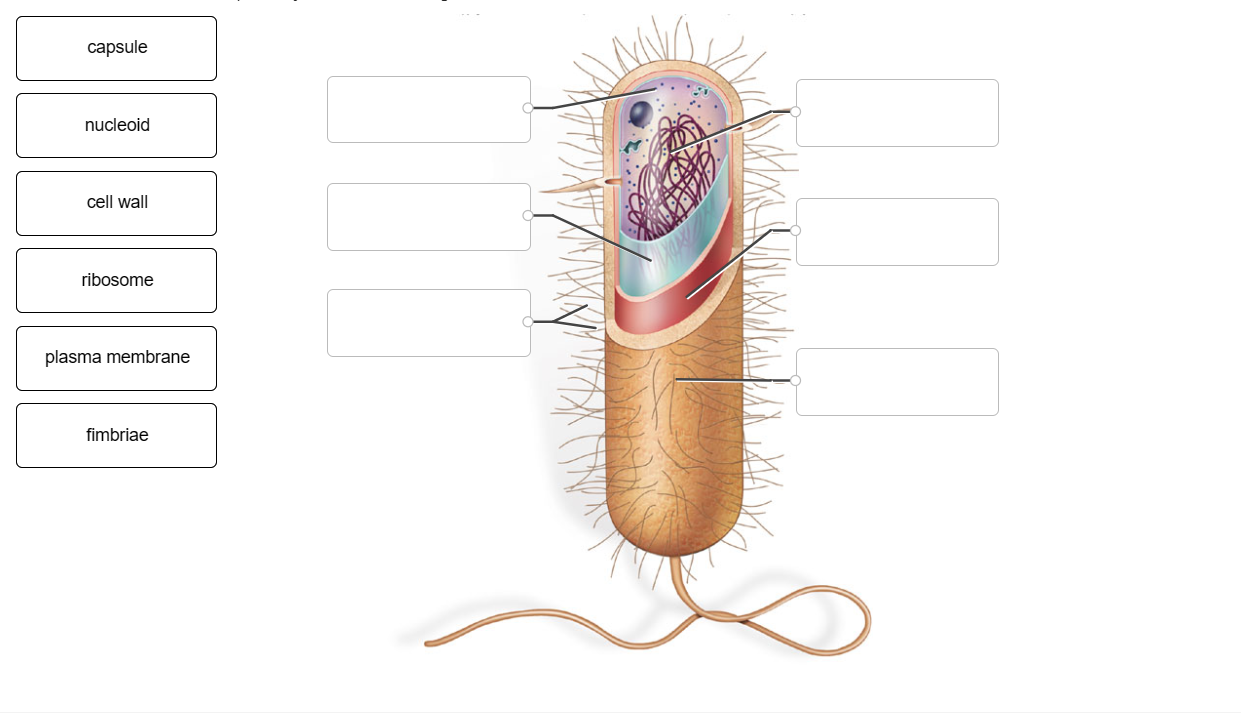
Post a Comment for "39 prokaryotic cells with labels"